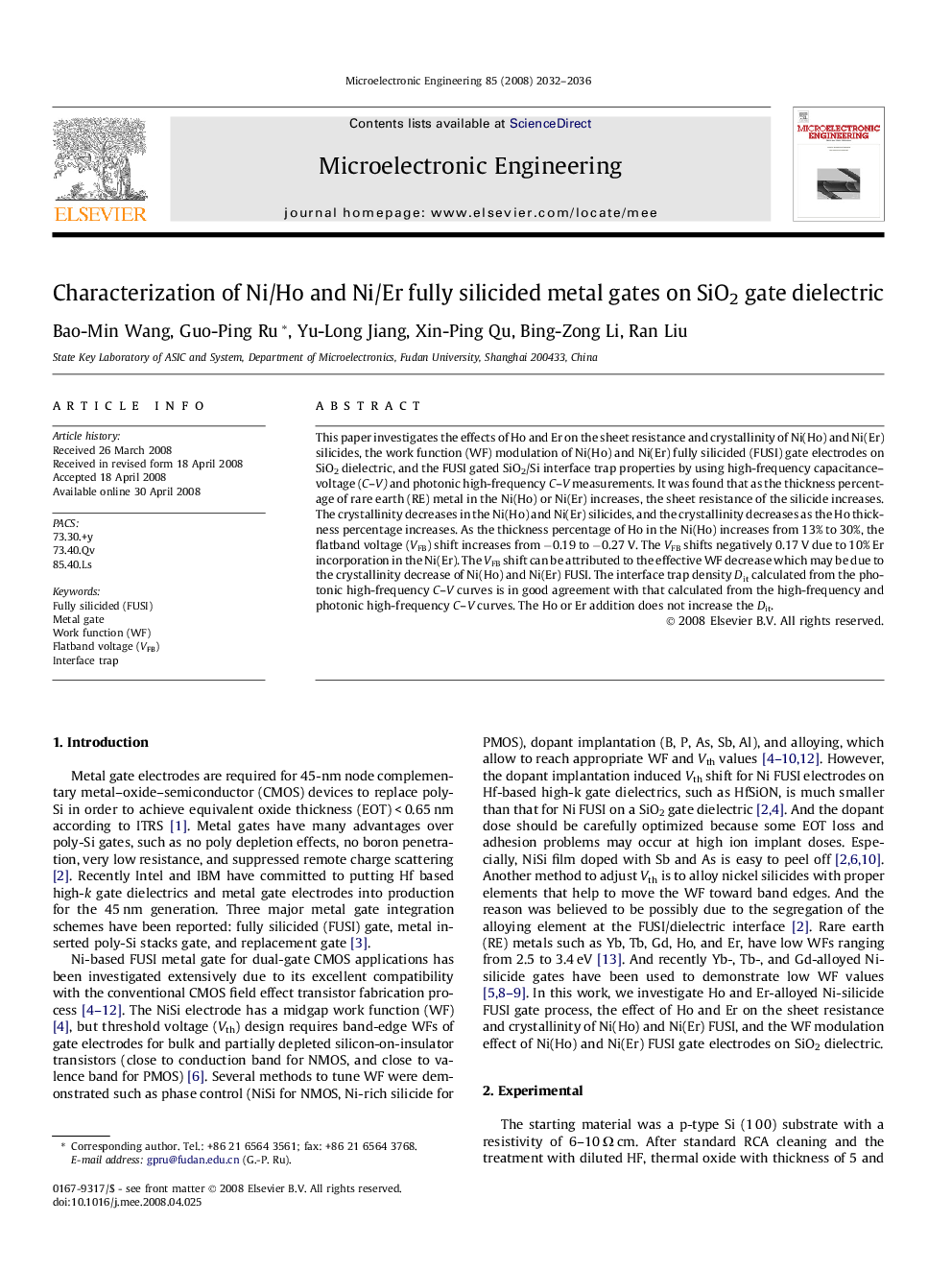| Article ID | Journal | Published Year | Pages | File Type |
|---|---|---|---|---|
| 540676 | Microelectronic Engineering | 2008 | 5 Pages |
This paper investigates the effects of Ho and Er on the sheet resistance and crystallinity of Ni(Ho) and Ni(Er) silicides, the work function (WF) modulation of Ni(Ho) and Ni(Er) fully silicided (FUSI) gate electrodes on SiO2 dielectric, and the FUSI gated SiO2/Si interface trap properties by using high-frequency capacitance–voltage (C–V) and photonic high-frequency C–V measurements. It was found that as the thickness percentage of rare earth (RE) metal in the Ni(Ho) or Ni(Er) increases, the sheet resistance of the silicide increases. The crystallinity decreases in the Ni(Ho) and Ni(Er) silicides, and the crystallinity decreases as the Ho thickness percentage increases. As the thickness percentage of Ho in the Ni(Ho) increases from 13% to 30%, the flatband voltage (VFB) shift increases from −0.19 to −0.27 V. The VFB shifts negatively 0.17 V due to 10% Er incorporation in the Ni(Er). The VFB shift can be attributed to the effective WF decrease which may be due to the crystallinity decrease of Ni(Ho) and Ni(Er) FUSI. The interface trap density Dit calculated from the photonic high-frequency C–V curves is in good agreement with that calculated from the high-frequency and photonic high-frequency C–V curves. The Ho or Er addition does not increase the Dit.
